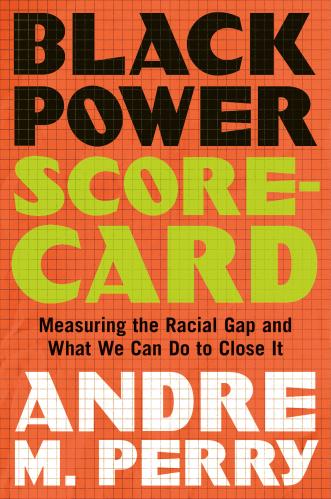In the first part of “Pension Puzzles” I wrote “Everyone knows that taxpayers are getting stuck with a huge bill for teacher pensions and that the money paying for those pensions is money not going into direct education support. The thing everyone knows doesn’t come close to describing how bad the situation really is.”
You probably have a sense that teacher pensions have gotten very expensive. That is true, but things are worse than you may think for two reasons: (1) Much of the large amount that we pay into pension systems is currently allocated to make up for failures to adequately fund pension systems in the past—such spending doesn’t support current education at all; and, (2) The accounting rules for public pension systems are bent, so the real deficit is far larger than it appears to be.
Are we really spending that much more than we used to on teacher pensions? Robert Costrell, of the University of Arkansas, has put together the numbers that show just how much spending has risen. Costrell’s first graph shows employer contributions for teachers’ retirement benefits (in red) and for private sector managers and professionals (in blue) from 2004 through the fall of 2015.

The first thing that strikes you may be that the red teacher line is substantially higher than the blue private-sector line. Remember though that the height of the lines are determined by employer contributions divided by salary. The denominator (the salary) is generally higher in the private sector (as I’ve written about before), which makes the blue line lower than it would be if we were looking at employer contributions for equal salary levels. So the relative heights of the lines don’t necessarily mean that pension payments are higher (in actual dollar value) for teachers. However, Costrell’s work does make two things clear:
- The mix of pension spending to current salary is much higher for teachers than it is for the private sector. This suggests, but for reasons discussed below doesn’t prove, that the mix between current and deferred compensation for teachers is wrong.
- Spending on pensions versus current compensation has skyrocketed for teachers while remaining more or less unchanged in the private sector.
Does this pension spending amount to a big deal in the overall scheme of education budgets?
Yes.
Costrell has calculated that school contributions to retirement plans (for all employees, not just teachers) has doubled in inflation-adjusted terms over the last decade. Here’s his picture:

Costrell estimates that schools now devote almost 9 percent of all current spending to pension contributions.
Here’s another way to put the numbers. This figure shows we now spend nearly $1,100 per student on retirement benefits. The average public school student teacher ratio is 16 to 1. So we are spending about $17,000 per year per teacher in pension contributions. Do you suppose most teachers might prefer a little less in the way of pension contributions and a little more in the way of salary? The mix of current versus deferred compensation for teachers seems weighted too heavily toward pension and not enough toward current salary.
But here’s the problem. In many states, much of the spending on teacher pensions isn’t actually going to pay for pensions for current teachers. Instead, the payments into pension funds are going to make up for the failure to adequately fund those pensions in past years. (The inadequate funding is a problem for state and local pensions generally; it’s not limited to teacher pensions.)
How did we get into this situation? When politicians sit down to negotiate teacher compensation they face a choice: Pay good salaries now and raise taxes to fund them, or pay modest salaries now with the promise of big pensions later and figure that someone else will be in office when the bill comes due. Well, you could probably guess what happened in most states, and now the bill is coming due. The National Council on Teacher Quality writes,
In 2014 teacher pension systems had a total of a half trillion dollars in unfunded liabilities—a debt load that climbed more than $100 billion in just the last two years. Across the states, an average of 70 cents of every dollar contributed to state teacher pension systems goes toward paying off the ever-increasing pension debt, not to future teacher benefits (p. iii).
While we are spending a huge amount to fund teacher pensions, most of that spending doesn’t go to attracting the best teachers. It’s paying off past debts. (For a more detailed discussion, see Chad Aldeman’s “The Pension Pac-Man.”)
If all this sounds bad, that just means you don’t fully appreciate the situation. It’s not “bad,” it’s really, really bad. It turns out that public pension systems play by a different set of accounting rules than those allowed in the private sector, and this allows the pension funds to greatly overstate their reserves. (Again this is all local and state pensions, not just teacher pensions.)
The issue at hand is the interest rate that the public pension systems are allowed to assume in calculating how much money they need to fund future pension liabilities. The fundamental rule of finance theory is that if you guarantee a future payment—as pension funds do—then you need to figure your investment returns based on investments guaranteed not to lose money. In other words, the interest rate you should use in calculations is the so-called “safe rate of return.” Safe assets don’t pay as much as risky assets. When we invest for our own retirement, most of us put some of our money in stocks. We realize that if the stock market takes a turn for the worse we’ll be hurt, but the odds are good that we’re better off with some risk in the investment. The issue is that when we invest for ourselves we’ve decided to risk a smaller retirement income. Pension funds have promised a specified payment level—therefore they should be forecasting earnings only at the safe rate of return..
The way the law is written, public pension funds are allowed to assume they will earn at the higher, risky rate. Nobel laureate William Sharpe (Bill invented much of modern finance theory) explains that public pension funds can be valued in two ways. The “actuarial approach” uses the (legally permissible) higher, risky interest rate. The “market value approach” uses the (correct) lower, safe rate of interest. For example, CalPERS (the giant California public pension system for most workers other than teachers) assumes a 7.5 percent return on assets (actuarial approach) when deciding how much money it needs to set aside but assumes a much lower 2.56 percent return (“market value approach”) when negotiating buyouts from the system.
All this makes an unbelievably large difference. Suppose you wanted to guarantee a $20,000 a year pension with 30 years of payments. If you believe that you are guaranteed to earn 7.5 percent a year then you need to set aside $236,208. But if you are only sure to earn 2.56 percent a year then the required set aside rises to $415,276. In this example, a pension fund using the actuarial method has set aside only a bit over half of what it really needs.
If that sounds really, really bad…you’re still missing something. Most teacher pension plans provide significant inflation protection. That means that the safe investment return has to include an offset for future inflation. At the moment, the return on a 30-year Treasury bond that includes an inflation offset is only 0.67 percent. Using that as a truly safe rate of return, the pension fund in our example should really set aside $541,908 (2.3 times the original set aside value).
In summary, teacher pensions aren’t great for most teachers, and the system is an underfunded disaster waiting to happen for taxpayers. For teachers, we should reform the system to something equitable for all teachers and fairly funded going forward. It’s harder to say what we should do about the gross underfunding of the already incurred pension debt. But as the aphorism attributed to Will Rogers says,
If you find yourself in a hole, stop digging.
The Brookings Institution is committed to quality, independence, and impact.
We are supported by a diverse array of funders. In line with our values and policies, each Brookings publication represents the sole views of its author(s).








